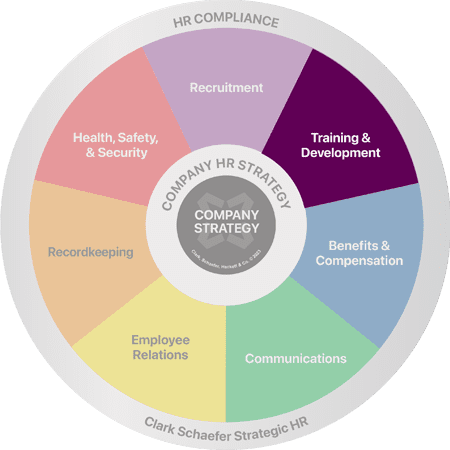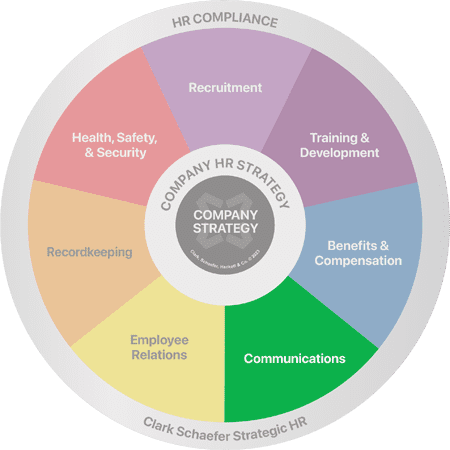Six Sigma 101
Last Updated on March 1, 2024 / Training & Development
by Debbie Hatke, MA, SPHR
Everyone by now has heard of Six Sigma; even if you don’t know what it is. If you’re a recruiter, you’ve probably seen it listed on resumes quite frequently. But what is Six Sigma? If you are an HR practitioner, chances are you haven’t been exposed to this concept in much detail, but you should be.
Six Sigma is akin to the Total Quality Management movement of the 1980’s. You might remember – Deming, Juran, Quality Circles, Statistical Process Control (SPC) and Continuous Process Improvement (CPI). These are all concepts that are associated with Total Quality – the idea of improving overall quality in the workplace by making incremental quality improvements or maintaining quality standards. Six Sigma more or less looks at quality in more detail; statistical detail if you will. It focuses on the number of defects that might occur in a product and works to reduce those defects. In fact, the term Six Sigma refers to the desire to shoot for near perfection – defined as no more than 3.4 defects per million items produced; that’s 99.9997% accuracy.
While you might think that being 99.9997% accurate in terms of producing a quality product or providing a service sounds a little lofty, when you stop to look at the numbers it becomes apparent why companies are so concerned with a Six Sigma level of quality. In a recent class provided by the NHRA of Cincinnati, Paul Gormas, of the International Society for Six Sigma Certifications, explained it this way: accepting an accuracy level of “only” 99% would mean tolerating about 20,000 lost pieces of mail per hour or living with no electricity for 7 hours each month (and many of us living in the Greater Cincinnati area know from September 2008 how that might feel). If that isn’t an eye-opener, imagine having one of the 5,000 incorrect surgical operations that might occur each week if held to only a 99% accuracy level – no thank you!
In addition to taking a more statistical approach to managing quality, Six Sigma takes the quality movement a step further by demanding cultural change – which is where HR comes in. By looking at people processes, Six Sigma changes those elements of a process that result in defective products. This often involves changing how employees work and requires an organization to address the needs of its customers; both internal and external. Six Sigma works to reduce variation in product (defaults) by using standardized processes, specific metrics to measure progress and unifying the organization in terms of the processes, metrics and language used. Human Resources, because of their expertise in facilitating cultural change, is instrumental in achieving success with Six Sigma.
Six Sigma projects revolve around the activities of a Team. In most organizations a Quality Counsel will identify Six Sigma initiatives that the organization should attempt to tackle based on need. Someone at the executive level typically sponsors the initiative and forms a Team. A Six Sigma Project Team will have a business sponsor, a process owner (typically the supervisor), a team leader (who is a black belt) and project members (who are green belts). The Team may also have other resources involved (such as HR or Finance) who would require Six Sigma knowledge at a yellow belt level.
Now about those belts… If you’ve paid attention to Six Sigma “speak” you’ll notice that the different rankings of individuals skilled in Six Sigma seem to relate to the rankings achieved in Karate – signified by belt colors. Team members learn roles and techniques needed for Six Sigma transformation in varying levels:
- A “White Belt” individual has been taught a high level overview of Six Sigma and how it works. When beginning a Six Sigma program in an organization it’s a good idea to educate employees on the overall process and a White Belt is where to start.
- Someone with a “Yellow Belt” is considered a subject matter expert. These might be individuals who work in HR, IT or Accounting. They have a specific knowledge about an area that might not be of primary focus on a Project Team, but bring specific knowledge about their function or area.
- A “Green Belt” is usually earned by a project member. They need to have a good grasp of the Six Sigma concepts to be productive in Team discussions.
- Team leaders are “Black Belts”. They have learned Six Sigma techniques of facilitation in great detail. Black Belts are trained in change management and are taught the leadership skills needed to run a successful Project Team.
- “Master Black Belts” are individuals who are authorized to teach other Black Belts. They can also mentor and oversee projects. They have a deep understanding of the statistical needs of the Project Team.
Despite the seemingly stair-step design of the different belts, it is not necessary to progress through each rank to earn a Black Belt. A Team Leader can be trained as a Black Belt without going through the other training.
Six Sigma is very methodical and there are set methods for laying out the issues and developing solutions. Once all the players are assembled, it is up to the Project Team to identify and define the stated problem and work through the various Six Sigma exercises and metric analysis to come up with a resolution. HR can be very helpful either as a Project Team member or simply as an ancillary resource in accomplishing the goals of a Six Sigma project.
Perhaps now you have a better grasp of exactly what Six Sigma is, what the different belts signify and how they come into play within the Project Team. Remember, Six Sigma can be applied to any organization and to any area of an organization from manufacturing to IT. How will you use it in HR? Stay tuned to learn more…
Debbie Hatke, MA, SPHR is a Senior Human Resources Management Consultant and Talent Strategy Manager with Strategic Human Resources, Inc. (www.strategicHRinc.com). If you have questions or comments about this article, you can contact Debbie at Debbie@strategicHRinc.com.







